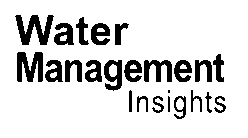The water industry is at a crossroads, and the path forward is anything but straightforward. As the sector grapples with an ageing infrastructure and mounting environmental challenges, the need for innovative solutions and collaborative expertise has never been more pressing. Adler & Allan, a key player in the industry, has outlined a strategic approach to navigate the complexities of AMP8, the regulatory period that will shape the UK’s water landscape from 2025 to 2030. Their 3×3 formula, detailed in the whitepaper “Achieving AMP8 efficiently,” offers a roadmap for water companies to maximise existing assets, drive sustainable change, and meet regulatory demands.
The UK’s wastewater pipe network is under intense scrutiny, with issues like internal and external flooding, Combined Sewer Overflow (CSO) spills, and pollution incidents making headlines daily. These problems disrupt communities and directly impact Outcome Delivery Incentives (ODIs), which reward water companies for meeting performance targets. The temptation to build additional capacity is strong, but it raises a crucial question: how can we spend more efficiently while spending more? Adler & Allan’s answer lies in maximising existing assets to improve outcomes and transform environments.
The first capability in their 3×3 formula is optimising commercial and sustainable value. As Ofwat, the water services regulation authority, focuses on affordability and performance, water companies face a dual challenge: deliver more while spending less. This isn’t just about cost-cutting; it’s about ensuring every pound invested generates maximum impact. Regulatory Capital Value (RCV) is pivotal in determining water company price limits. With Ofwat’s final determinations guiding fixed investment expenditure, efficient delivery is crucial. Maximising asset value within these constraints highlights performance and creates an opportunity to pair enhanced outcomes with reduced delivery costs. This requires expertise in strategic planning, cost management, and risk mitigation. By aligning these disciplines, water companies can meet performance objectives without compromising quality or environmental standards.
The second capability is leveraging data and analysis for actionable insight. Despite efforts to enhance data capture, an estimated 75% of the UK’s wastewater network remains unmonitored. This data gap raises a critical question: how can we optimise capacity and performance without a clear understanding of our infrastructure’s usage? Adler & Allan believes the network holds untapped potential. The key to unlocking it lies in insight-led investment planning, using technology to deliver actionable intelligence without significant expenditure. Advanced sensors, artificial intelligence (AI), and the Internet of Things (IoT) are revolutionising wastewater management. These technologies provide unprecedented insights into system performance, enabling quicker responses and reducing pollution risks. For instance, AI and machine learning analyse vast datasets in real time, identifying patterns and predicting overflow events. IoT-enabled smart monitoring offers a holistic view of network performance, optimising existing assets and reducing reliance on reactive measures.
The third capability is improving hydraulic capacity and extending asset lifespan. Storm overflows are a persistent challenge, and volumetric storage is often seen as the solution. However, building larger storm tanks is not always effective, particularly in urban areas. A more sustainable approach focuses on outcome-driven storage. By analysing inflows and outflows, companies can right-size their storage solutions. Often, a more effective strategy is to reduce the amount of water entering the system upstream, minimising the need for pumping and treatment – two of the most significant operational costs and sources of CO₂ emissions. Operationalising assets starts with ensuring they operate as originally designed. Expert CCTV surveys provide a detailed map of underground infrastructure, highlighting issues and preventing them from escalating. Regular maintenance extends the lifespan of assets and improves performance. For networks perceived to lack capacity, a closer examination often reveals opportunities to optimise performance. By leveraging data, companies can identify underutilised assets, diagnose issues, and implement cost-effective maintenance measures to boost hydraulic capacity without resorting to large-scale construction projects.
Adler & Allan’s 3×3 formula is not just a theoretical framework; it’s a call to action. Water companies face mounting operational, regulatory, and environmental pressures. To meet these challenges, a clear and coordinated strategy is essential. By combining optimising value, leveraging data, and improving hydraulic capacity, companies can achieve measurable results, including reduced flooding, increased asset performance, and alignment with ODIs. This approach challenges the status quo, pushing water companies to think beyond traditional solutions and embrace innovative, data-driven strategies. As the industry navigates the complexities of AMP8, Adler & Allan’s whitepaper serves as a guiding light, sparking debate and driving development in the sector. The future of the water industry is not about building more; it’s about doing more with what we have. And that future starts now.
